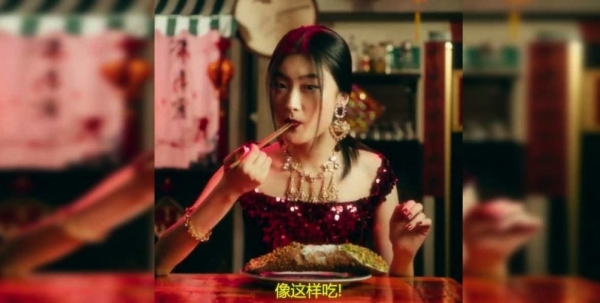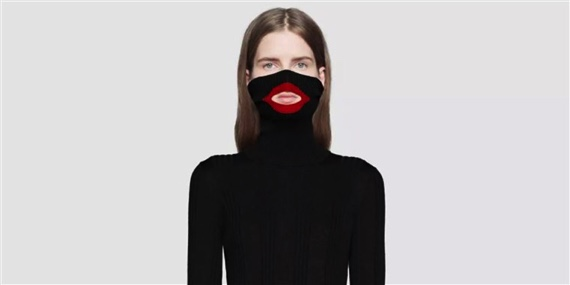뉴욕 패션쇼, 백인 거물들이 무대 앞자리 차지
'Call Out' 당한뒤 형식적 사과... 문화다양성 위한 노력 있어야

[오피니언뉴스=김나현 뉴욕 통신원] 최근 수년사이 아시아인들은 명품 브랜드의 최대 소비자로 자리잡았다. 2018년 Burberry Fashion Line 매출의 약 40 %가 아시아 태평양 지역에서 일어났다. 다른 고급 브랜드들 사이에서도 이런 매출 증가 현상이 나타나고 있다.
서울이나 홍콩 등 아시아 대도시에서는 브랜드 자체가 유행이 되어버린 입생로랑(Yves Saint Laurent), 루이뷔통(Louis Vuitton), 구찌(Gucci) 등을 수없이 많은 사람들이 입고 다닌다. 동아시아인들의 호응에 맞춰 이들 패션 회사들은 그 지역의 유명 연예인들과 모델들을 브랜드의 얼굴로 활용해 고객층의 친밀도를 높이려고 노력한다.
디자이너 카알 라거펠트(Karl Lagerfeld)는 한국의 유명 뮤지션이자 글로벌 패션 아이콘인 지드래곤(G-Dragon)으로 잘 알려진 권지용을 샤넬의 홍보 대사로 앞세우고, 한국 모델인 박수주를 패션쇼와 잡지 광고 모델로 자주 등장시키기도 했다.
이런 파트너쉽으로 한국인들은 자국 유명인들이 국제 무대에 성공적으로 진출하는 것에 환호하고, 브랜드들은 효과적으로 매출 증가를 이뤄냈다.
필자도 재미 대한민국 여성으로서 평소 좋아하는 한국 연예인들이 뉴욕의 대형 전광판과 잡지 등에서 세계 유명 브랜드를 선전하는 모습을 보면 한국 스타들이 패션계에서 전세계적인 영향력을 미치는 것에 자긍심 마저 느끼게 된다.
돌체 앤 가바나의 인종차별 광고물 논란
그런데 최근 돌체 앤 가바나(Dolce and Gabbanna) 브랜드가 지난해 발표한 비디오 광고를 보고 깜짝 놀란 적이 있다. 한 모델이 이탈리아식 디저트 카놀리(cannoli)를 젓가락으로 먹으려는 모습을 표현한 '젓가락으로 먹기'라는 제목의 광고였다.

중국 문화를 상징하는 붉은 색을 바탕으로 한 중국 식당에서 전통 중국 의상인 치파오 (Qipao)를 입은 외까풀의 창백한 피부를 한 여성 모델이 영어 자막이 깔린 중국어 지시에 따라 젓가락으로 카놀리를 먹는 내용이었다.
이 비디오 광고가 노골적으로 중국 문화를 인종차별적으로 묘사하고 있는 사실에 너무 놀랐다. 나레이터는 중국식 발음으로 브랜드 이름을 인식할 수 없을 정도로 발음했고, 모델은 젓가락으로 카롤리를 먹지 못하는 우스꽝스러운 상황을 연출했다.
심자어 나레이터는 "외국 요리가 너무 크다”며 아시아인들의 성기 크기에 대한 고정 관념을 암시하고 조롱하는 수준까지로 전락했다.
아이러니한 점은 중국인들이 세계 유명 패션브랜드의 가장 중요한 고객층으로 부상한 배경에는 그들의 엄청난 부와 교육수준이 바탕이 됐다는 사실이다.
중국인들의 강한 자부심은 자신들이 브랜드 이름을 제대로 발음하지 못하고, 간단한 음식조차 먹는 법을 모르는 사람들로 비하되는 것을 용납할수 없었다. 결국 이 인종차별적인 광고로 인해 돌체(Dolce & Gabbanna)는 전세계적으로 비판을 받고, 광고를 내리게 됐다.
'Call Out' 문화, 인터넷 공간서 빠르게 확산
패션업계에서 'Call Out' 문화는 새로운 현상은 아니다. 'Call Out' 문화는 'Cultural Appropriation(외부인의 문화 오용)'과 함께 신랄하게 논의되는 주제중 하나다.
Urban Dictionary에 의하면 'Call Out' 문화는 "소셜 미디어를 중심으로 자신들의 신념에 어긋나는 타인의 언어나 행동을 비판하고 조롱하는 집단 행위”로 정의된다.
구찌(Gucci)와 같은 유명 브랜드도 백인 얼굴을 검은 복면 (balaclava)처럼 칠한 것에 대해 인종차별적인 행위라는 비판을 받았다. 인터넷을 통해 비판이 확산되자 'Black Face' 디자인을 없애는 한편 "조직 전체의 다양성을 높이겠다"고 약속한 적이 있다.

인종차별주의는 분명 청산되어야할 과거의 이념이다. 그렇기 때문에 돌체 앤 가바나(Dolce & Gabbanna)가 고객층의 문화와 인종을 존중하지 않고, 미성숙한 고정 관념과 아시아인 비하 내용을 광고에 담았다는 것에 실망하지 않을 수 없다.
많은 기업들이 인터넷에서 'Call Out' 비판을 받고, 이미지 쇄신을 위해 노력하고 있다. 미국의 화장품 브랜드 Tarte는 여러 인종의 여성을 위해 기초 화장품 라인을 크게 확장시켰고, 업계의 다른 회사들도 그 추세에 뛰어들었다.
문화다양성 흐름 자리잡기 시작...진정한 이해 노력 있어야
이런 노력은 패션 업계에서 더욱 분명하게 나타나고 있다. 패션쇼, 잡지, 광고, 소셜 미디어에서 문화 다양성이 뚜렷하게 나타나고 있다.
최신 유행 화장품에서는 외까풀 눈을 가진 동양인을 위한 사용법 설명을 만들고, 아프리카 문화를 상품마케팅에 활용하기도 한다. 반응이 빠른 인터넷에 대응해 적극 문제를 해결한 회사들은 이미지 쇄신을 노리고 있다.
인터넷 상의 모든 것을 신뢰해서는 안된다는 말을 우리는 종종 듣는다. 인터넷 상의 소문과 비판을 잠재우기 위해 만든 이미지에는 많은 것들이 내재돼 있을 수 있다.
형식적 다양성이 실제로 다문화가 인정되고 존중되는 것을 의미하지는 않는다. 패션쇼에서 다양한 인종의 모델이 나선다고 하지만, 첫 줄에 앉아 있는 관객, 편집장, 디자이너 등 '실제 권력자'들은 대부분 백인이다. 패션업계에서 변화를 일으킬 수있는 진정한 힘을 지닌 사람들은 단일 인종의 집단인 것이다.
보그(Vogue)의 유명한 크리에이티브 디렉터인 앙드레 레옹 탈리(André Leon Talley)는 패션쇼 첫 줄에 앉은 '유일하고 흑인'으로 불렸다. 그는 이 자리에서 "다른 흑인들은 다 어디 있습니까?" 라는 질문을 던졌다고 한다.
패션업계의 디자이너 세계에 더 많은 문화가 공존했다면, 애초에 'Call Out'이 필요 없었을 것이며 창작성이 뛰어난 작품들이 더 많이 만들어졌을 것이다.
인터넷에서는 판단과 비판이 매우 빠르고 이에 대한 반응 역시 급속도로 이뤄지는 만큼, 임시 방편의 해결책으로 잠잠해질 때도 있다.
그러나 근본적인 문제를 해결하기 위해서는 문제의 뿌리를 찾아 깊게 파고 들어가야 한다. 패션업계의 경우에도 보여주기 위한 다양성보다는, 진정으로 그 문화를 대표하는 이면의 노력들이 있어야 한다는 생각이다.
*미국인들 사이에 다양하게 쓰이는 'Call Out'이라는 말은 이 글에서는 '잘못된 점을 공개적으로 지적하고 비판하다'는 의미로 쓰였다.
Calling Out Call Out
Over the past couple of years, East Asians have rapidly become the number one consumers of famous luxury brands. In 2018, it was reported that the Asia-Pacific region had accounted for about 40% of the Burberry fashion line, and like for all other high-end brands, this percentage is on the rise. In fact, it is more common in major Asian cities like Seoul or Hong Kong to see brands like Yves Saint Laurent, Louis Vuitton, and Gucci worn regularly anywhere and everywhere because the brand name itself is the trend. Many luxury brands responded to this attention they had been receiving from East Asia by reaching out to renowned A-list celebrities to become the face of their brand and hired models to better represent their customers. Designer Karl Lagerfeld had Korean musician and global fashion icon Ji-Yong Kwon, better known as G-Dragon, become ambassador of Chanel and frequently used Korean model Soo-Joo Park on runway and magazine. This partnership would be a mutually beneficial relationship because Koreans would feel pride in seeing their own people making successful international debuts and effectively make the company’s business boom. As a Korean American woman, it surely was empowering to see some of my favorite Korean celebrities on billboards and magazines for big brands because it indicates our global influence on the fashion world.
I recently stumbled upon an advertisement by Dolce and Gabbanna released last year. It was an instructional video titled “Eating with Chopsticks” that showed a model struggling to eat a cannoli, an Italian dessert. It took place in a Chinese restaurant with a Chinese model and the dominant red color on the set screamed Chinese culture. The model had the stereotypical slit eyes, pale skin, and wore a Qipao, traditional Chinese wardrobe. The narrator spoke in Chinese (subbed in English) and was giving instructions to the model on how to eat the cannoli. What struck me the most was how blatantly racist the video advertisement was towards Chinese culture. The narrator mispronounced the brand name unrecognizably in a thick accent, and the model just couldn’t seem to figure out how to eat it! The advertisement went as far as implying at the insulting Asian stereotype about genital size in the video- the narrator would mockingly ask the model if the foreign dish was “still too big?” for her. It is ironic because Chinese customers are definitely one of the most popular buyers because of their immense wealth and education. If anything, their famous Chinese pride would have them scoff at anyone who would butcher a brand name so poorly and mock those who couldn’t figure out how to eat such a simple dish. Dolce & Gabbanna was immediately called out globally for their racist video and took down the video eventually.
The concept of calling out is definitely not new in fashion. In fact, Call Out culture has been one of the most discussed topics after Cultural Appropriation (although they may go hand in hand). Call Out culture, according to Urban Dictionary, is “A group of people, especially on social media, who ridicule others for real or perceived words or actions that go against their beliefs”. Famous brands like Gucci had been called out for replicating Black Face, a racist practice of a white person painting their face black, onto a Balaclava, which had taken over the Internet. Gucci took down the rest of their Black Face designs and promised to increase “diversity throughout their [our] organization”. Surely, ideas of racism should be of the past. That’s why I found it so surprising that Dolce & Gabbanna would “honor” their loyal customers by not only using their culture and people in an advertisement but also alluding to immature stereotypes and portraying Asians in an extremely backward way in their advertisement.
Many companies have tried to save face after being called out on the Internet. American makeup brand Tarte has exponentially expanded their foundation line to include more women of color and others followed suit. The efforts in fashion are more obvious because fashion is always about making a statement. It is apparent that there is more diversity on the runway, on magazines, billboards, and even social media. There is more inclusivity on makeup tutorials by high fashion lines to target those with Asian mono-lids and to even celebrate African culture in their makeup lines. The Internet is almost too quick to react positively and the company’s image is saved for fixing a temporary surface problem.
We often hear that we shouldn’t trust everything on the Internet- of course there is so much more underlying an image that a company can create to pacify the gossip-loving Internet. Just because we see more diversity does not mean that it is truly being celebrated and practiced behind the scenes. Even in fashion shows, the runway may showcase many models of color but the front line audience- the editors, designers, and “power people”- are mostly white. The people with the real power who can make a change, the fashion industry itself, is racially monotonous. André Leon Talley, renowned creative director of Vogue, and remembered for being “the One and Only” – black man in front row fashion shows- was reported to have asked “where are all the black people?” If there was more heterogeneity within the fashion industry and there was more culture amongst the designers there wouldn’t be a need to call out in the first place, and I’m sure that the product of designs would be much more appreciatively enriched with.
The people of the Internet are too quick to judge and call out companies, and just as they come roaring in, they quiet once they see a temporary surface solution. To fix a problem, one must go to the roots of the issue and dig deep, and in this case, what we need is not cultural diversity for show, but true representation behind the scenes of the fashion industry.
저작권자 © 오피니언뉴스 무단전재 및 재배포 금지


